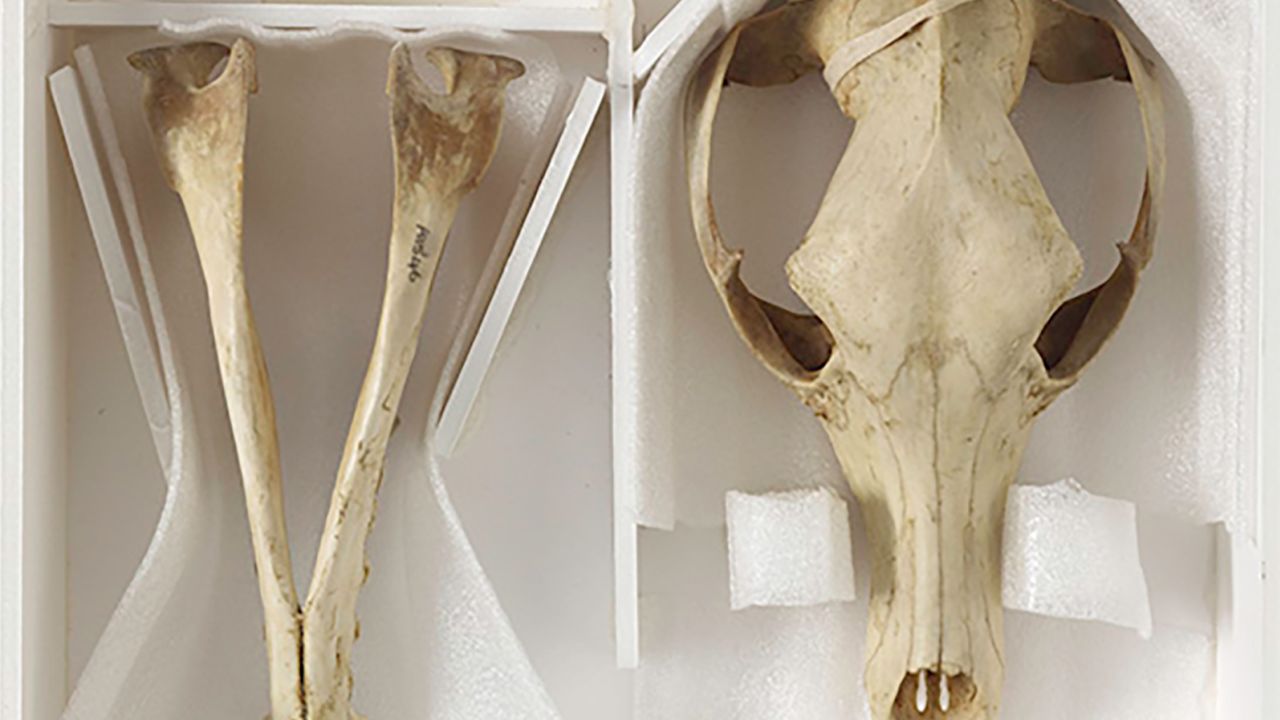Scientists plan to revive the Tasmanian tiger 0:53
(CNN) --
For decades, no one knew where the remains of the last thylacine, or Tasmanian tiger, were located.
As it turns out, they were hiding in plain sight: at the Tasmanian Museum and Art Gallery (TMAG) on the Australian island state, where they had gone unidentified for more than 80 years.
The size of a coyote, the Tasmanian tiger disappeared around 2,000 years ago from virtually everywhere except Tasmania.
As the only marsupial predator to have lived in modern times, it played a key role in the island's ecosystem, but that also made it unpopular with humans.
Skull of the last thylacine or Tasmanian tiger that died at Hobart Zoo on 7 September 1936. Credit: Tasmanian Museum and Art Gallery
In the 19th century, European settlers blamed shy, semi-nocturnal Tasmanian tigers for livestock losses (although feral dogs and human mismanagement of habitat were the culprits in most cases). They hunted them to extinction.
The last known Tasmanian tiger was an old female captured by a trapper and sold to a zoo in May 1936, according to a TMAG news release published Monday.
The animal died several months later, and its body was later transferred to the museum.
But the zoo did not keep any records of the sale because capture on land was illegal, so the trapper could have faced a fine, according to the statement.
advertising
This meant that the researchers and museum staff were completely unaware of the importance of the Tasmanian tiger in their collection.
"For years, many museum curators and researchers searched for his remains without success, since no thylacine specimen dating from 1936 had been registered in the zoological collection, so it was assumed that his body had been discarded," says Robert Paddle, a comparative psychologist at the Australian Catholic University, in the news release.
A Tasmanian tiger on display at the Australian Museum in Sydney, Australia, in 2002. Credit: Torsten Blackwood/AFP/AFP via Getty Images
After being brought to TMAG, the Tasmanian tiger's body was skinned and its skeleton disassembled as part of an educational collection, used by museum teachers to explain thylacine anatomy to students, and was often taken outside the museum. , according to the statement.
During that time, most of the world mistakenly thought that another Tasmanian tiger that died at Beaumaris Zoo in Hobart on September 7, 1936, was the last known individual of its species.
The error went undetected until recently, when an unpublished report from a museum taxidermist was discovered.
The report, dated between 1936 and 1937, mentioned a Tasmanian tiger among the specimens worked that year, prompting a review of all Tasmanian tiger skins and skeletons at TMAG, where the last of its species was eventually identified. .
Scientists plan the resurrection of the Tasmanian tiger, an animal extinct since 1936
"It is bittersweet that the mystery surrounding the remains of the last Tasmanian tiger has been solved and discovered to be part of the TMAG collection," said TMAG Director Mary Mulcahy.
The remains are now on public display in the museum's Tasmanian tiger gallery.
In recent years, the Tasmanian tiger has made a comeback in the headlines due to ongoing -- and controversial -- efforts by scientists to bring the animal back through ancient DNA recovery, gene editing and artificial breeding.
Extinction














